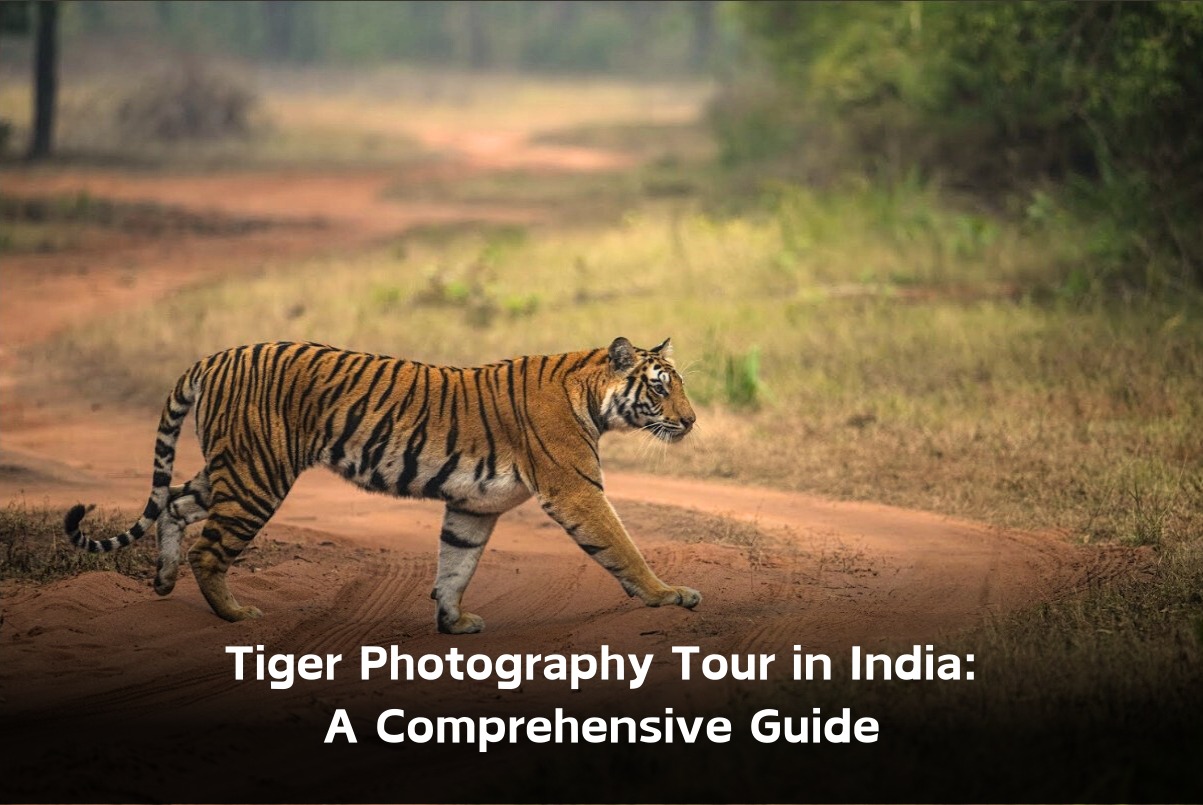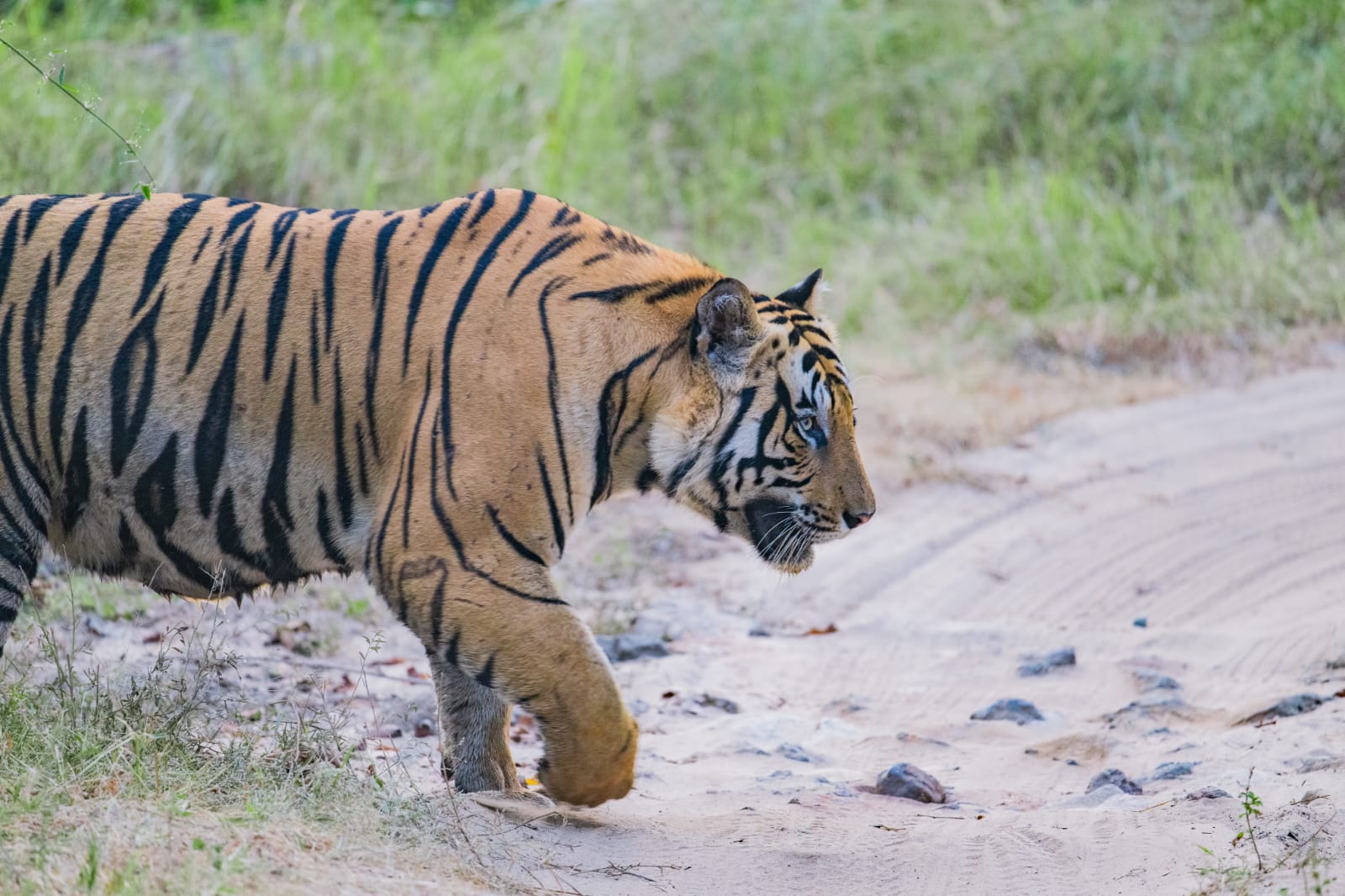
India is a country with the most diverse landscapes and richest biodiversity. House of the most impressive Bengal tiger, which is the national animal and the symbol of power and grace. A Tiger Photography Tour is an adventure of a lifetime for wildlife lovers as well as photographers. In this blog post, we venture into the fascinating realm of tiger photography in India; our journey contains the top safari destinations and provides photographic advice on how to capture the essence of these magnificent animals.
Top Destinations for Tiger Photography in India
Ranthambore National Park, Rajasthan:
Famous for its rich wildlife and historical significance, Ranthambore is one of the best places for tiger photography. The park’s tigers are often seen during the day, making it ideal for photography.
Bandhavgarh National Park, Madhya Pradesh:
Known for having one of the highest densities of Bengal tigers in the world, Bandhavgarh is a top choice for wildlife enthusiasts and photographers. The park’s varied topography and the presence of other wildlife species add to its allure.
Kanha Tiger Reserve, Madhya Pradesh:
Kanha is not only known for its tiger population but also for its scenic beauty and the diversity of its flora and fauna. It’s a great place to capture the beauty of the Indian jungle along with its apex predator.
Jim Corbett National Park, Uttarakhand:
As India’s first national park, Corbett has a rich heritage and diverse wildlife. Its varied landscape provides a stunning backdrop for tiger photography.
Sundarbans National Park, West Bengal:
This UNESCO World Heritage Site is unique due to its mangrove forests and the Royal Bengal Tigers adapted to the aquatic environment. The mysterious landscape of Sundarbans offers a different kind of photographic challenge.
Tadoba-Andhari Tiger Reserve, Maharashtra:
Tadoba is less crowded compared to some other parks, offering a more tranquil experience. It’s known for good tiger sighting opportunities, making it a promising location for photographers.
4 Essential Tiger Photography Tips
● Timing is Crucial for Tiger Photography
Tigers are most active during sunrise and late afternoon. It is best to plan your tiger photography tour around these peak times because the chances of capturing tigers in action during soft, golden light increase.
● Patience is Crucial for Tiger Photography
Wildlife photography demands patience. Observe the behaviour of tigers for long stretches in important locations. This patience may be rewarded with unique and personal moments that surely bring stunning authentic shots.
● Use the Right Equipment for Tiger Photography
Purchase good quality camera equipment that has a telephoto lens for taking photographs of tigers at long distances without disturbing their natural behaviour. For stability especially in low-light conditions, a solid tripod is needed.
● Be Respectful of Nature during Tiger Photography
Practice ethical wildlife photography by keeping a respectful distance, not using flash, and obeying the instructions issued by park authorities. This ensures a peaceful cohabitation between photographers and wildlife they want to shoot.
Wildlife Conservation through Tiger Photography
Tiger photography is a strong instrument in the field of wildlife protection. The photographers themselves help to raise awareness about the necessity of protecting these creatures’ habitats and support conservation by highlighting their natural beauty. Responsible tourism and photography are very paramount in the survival of these endangered species.
Conclusion
Wildlife photographers dream of journeying on a Tiger Photography tour. Each location offers a unique background ranging from Ranthambhore’s majestic landscapes to the Sundarbans’ aquatic wonders for capturing Bengal tigers’ beauty and grace. By engaging in responsible and ethical tiger photography, enthusiasts help preserve these amazing creatures so that future generations may continue to enjoy the majesty of India’s wild cats.
FAQs
Q1.Why is Ranthambhore National Park recommended for tiger photography in India?
Ranthambhore, situated in Rajasthan, is renowned for its historic ruins and dense forests, creating a unique backdrop for tiger photography. Here, the carefully planned tiger photography tour allows you to witness tigers roaming freely in their natural habitat.
Q2. How is Sundarbans National Park a unique Tiger Photography destination?
Sundarbans in West Bengal, a UNESCO World Heritage Site, offers a vast delta with estuaries, mangrove forests, and water channels. Tigers here are adept swimmers, making it an extraordinary destination for tiger photography that captures the interplay between the big cats and their aquatic environment.
Q3. What are the crucial tips for successful tiger photography in India?
Timing is crucial, with tigers being most active during early morning and late afternoon. Patience is key for observing their behaviour, and using the right equipment, such as quality cameras with telephoto lenses, ensures safe and effective captures. Ethical practices, like maintaining a safe distance, are also essential.
Q4. How does tiger photography contribute to wildlife conservation in India?Tiger photography serves as a powerful tool for wildlife conservation by raising awareness about the need to protect their habitats. Responsible tourism and photography play a crucial role in ensuring the survival of these endangered species.
